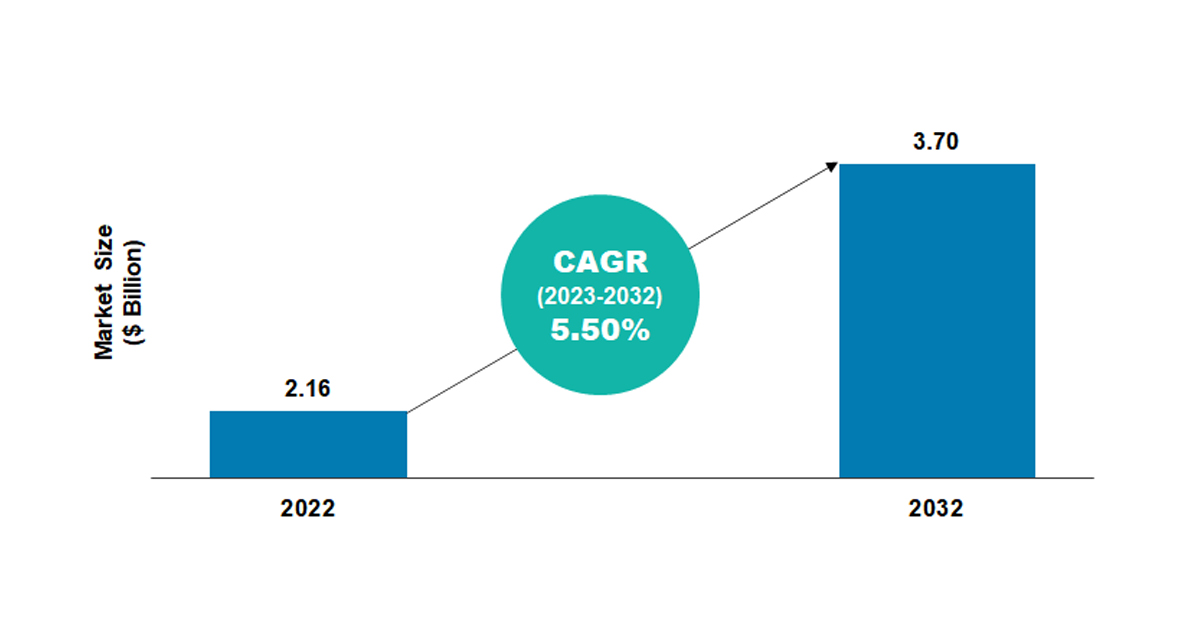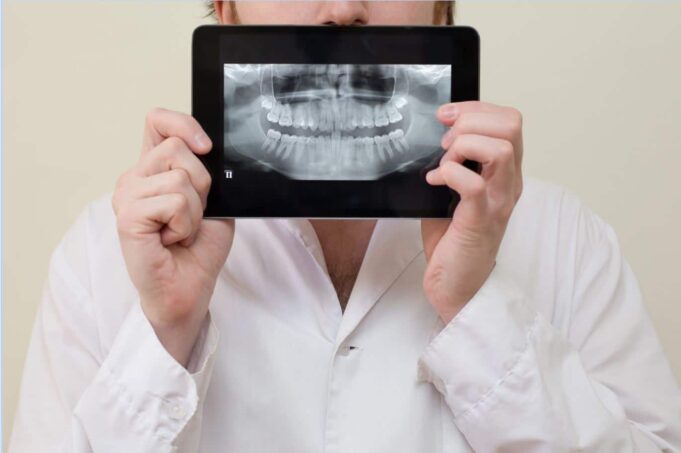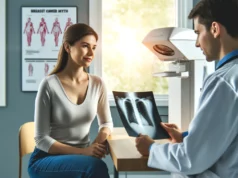Dental X-Rays have been an essential tool in diagnosing and treating dental problems for decades. Initially, dental X-Rays were captured using traditional film technology. However, with the advancement of technology, digital X-Ray detectors have become the new standard in dentistry. The shift from film X-Ray detectors to digital X-Ray detectors has transformed the way dental professionals diagnose and treat patients.
According to the BIS Research report, the global medical X-Ray detectors market was valued at $2.16 billion in 2022 and is anticipated to grow to $3.70 billion by the end of 2032, at a projected CAGR of 5.50% during the forecast period 2022-2032.

To get more information, download this FREE sample report
This blog will explore the evolution of X-Ray detectors in dentistry and the benefits of using digital X-Ray detectors over traditional film technology. It will also discuss the different types of digital X-Ray detectors available in the market and the features that make them a valuable addition to modern dental practices.
What are X-Ray detectors?
X-Ray detectors are devices that capture the X-Rays produced by an X-Ray generator and convert them into an electrical signal that can be processed to produce an image. In dentistry, X-Ray detectors capture images of the teeth and jaws, which is essential for diagnosing dental problems such as cavities, gum disease, and impacted teeth.
Two types of X-Ray detectors are used in dentistry, i.e., traditional film and digital. Traditional film detectors capture the X-Rays on a film that must be developed in a darkroom. Digital detectors, on the other hand, capture the X-Rays on a sensor connected to a computer that processes the image. Digital X-Ray detectors offer several advantages over traditional film detectors, including faster image capture, higher resolution, and the ability to manipulate and enhance images.
Today, digital X-Ray detectors are preferred for most dental practices due to their convenience, speed, and superior imaging capabilities. They have revolutionized how dental professionals diagnose and treat dental problems, allowing for more accurate diagnoses and efficient treatment planning.
Why are digital X-Ray detectors preferred over traditional film in dentistry?
Digital X-Ray detectors are preferred over traditional film detectors in dentistry for the following reasons:
Faster Image Capture: Digital X-ray detectors capture images instantly, eliminating the need for film development, which can take several minutes. This speeds up the diagnostic process and reduces patient wait times.
Higher Resolution: Digital X-ray detectors produce higher-resolution images than traditional film detectors, which can result in more accurate diagnoses.
Manipulation and Enhancement of Images: Digital X-ray images can be easily manipulated and enhanced to highlight specific areas of interest, making it easier for dental professionals to identify dental problems.
Reduced Radiation Exposure: Digital X-Ray detectors require less radiation exposure than traditional film detectors, making them safer for patients.
Environment Friendly: Digital X-Ray detectors do not require film or chemicals, making them more environment-friendly than traditional film detectors.
Cost-Effective: Over time, digital X-Ray detectors can be more cost-effective than traditional film detectors, as they eliminate the need for film and chemical processing, reducing the associated costs.
How are different types of digital X-Ray detectors affecting dentistry?
Each type of digital X-Ray detector has its advantages and disadvantages, and the choice of choosing the right detector depends on factors such as cost, image quality requirements, and the specific needs of the dental practice.
Three main types of digital X-Ray detectors used in dentistry are as follows:
Charge-Coupled Device (CCD) Detectors: CCD detectors were the first digital X-Ray detectors to be introduced in dentistry. They work by capturing X-Rays on a scintillator, which converts the X-Rays into the light. The CCD detector then captures the light and is converted into an electrical signal that is processed to produce an image.
Complementary Metal-Oxide-Semiconductor (CMOS) Detectors: CMOS detectors work similarly to CCD detectors but use a different type of sensor. CMOS sensors are smaller and require less power than CCD sensors, making them a more efficient option.
Digital Radiography (DR) Detectors: DR detectors use a flat panel sensor to capture X-Rays. The panel comprises an array of photodiodes, which convert the X-Rays into electrical signals that are processed to produce an image. DR detectors are the most advanced digital X-Ray detectors and offer the highest resolution and image quality.
Regardless of the type of detector used, digital X-Ray technology has revolutionized the way dental professionals diagnose and treat dental problems, providing faster, safer, and more accurate imaging than traditional film X-Rays.
What are some of the recent developments in digital X-Ray detectors in dentistry?
Factors such as the rise in fractures and spinal injuries, advancements in X-Ray detector technology, and the utilization of modern materials for X-Ray detectors and dose management development are propelling the market forward.
Some of the recent developments in digital X-Ray detectors include:
Cone Beam Computed Tomography (CBCT): CBCT is a digital X-Ray technology that uses a cone-shaped beam to capture 3D images of the teeth and jaws. CBCT provides more detailed and accurate images than traditional 2D X-Rays and is especially useful for complex dental procedures such as dental implant placement.
Wireless X-Ray Detectors: Wireless X-Ray detectors eliminate the need for cables, making them more convenient and efficient. They also allow for more flexibility in positioning the detector, resulting in better image quality.
Portable X-Ray Detectors: Portable X-Ray detectors are small and lightweight, allowing dental professionals to capture X-Ray images in different locations. This is especially useful in mobile dental clinics or for patients with limited mobility.
Artificial Intelligence (AI) Integration: AI algorithms can be integrated into digital X-Ray detectors to improve image quality and accuracy, as well as to assist with diagnosis and treatment planning.
Reduced Radiation Exposure: Digital X-Ray detectors are already associated with lower radiation exposure than traditional film X-Rays. However, recent advancements in digital X-Ray technology have further reduced radiation exposure, making X-Rays even safer for patients.
These advancements in digital X-Ray detector technology have further improved the accuracy, efficiency, and safety of dental imaging. Dental professionals can now provide more precise diagnoses and treatment plans, leading to better outcomes for patients.
Conclusion
Market players are developing several cost-effective, low-radiation dose, and high-resolution X-Ray systems due to the evolution of X-Ray technology. With the continued research and development efforts in X-Ray detector technology, we can expect to see even more advancements in the future, resulting in more precise and efficient diagnoses and treatment of dental problems. These advancements in X-Ray detector technology will undoubtedly contribute to improving dental care and the overall dental health of patients.
Interested to know more about the developing technologies in your industry vertical? Get the latest market studies and insights from BIS Research. Connect with us at [email protected] to learn and understand more.












